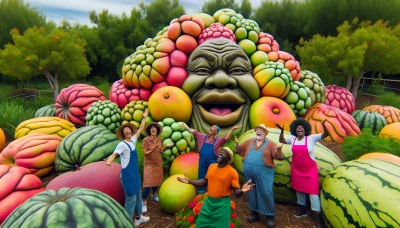Guava types Quiz
Test Your Knowledge
Question of
Introduction to Guava Types
Understanding the different types of guava is crucial for gardening enthusiasts who wish to cultivate these delicious fruits. Each variety has its own unique flavor, growth habits, and care requirements. By familiarizing themselves with the various guava types, gardeners can select the best varieties to suit their climate, space, and taste preferences. This knowledge also aids in proper plant care, ensuring a bountiful harvest of high-quality fruits.
Popular Types of Guava
- Apple Guava: The most common type, known for its sweet, slightly floral flavor and a creamy white or pink flesh.
- Pineapple Guava (Feijoa): Offers a unique blend of pineapple, apple, and mint flavors. It has a greenish skin with a white pulp.
- Strawberry Guava: Smaller in size with a distinct strawberry-like flavor. It has a red skin and a pink to red flesh.
- Lemon Guava: Has a lemony flavor and is yellow-green in color. It's smaller than the Apple Guava and has a more acidic taste.
- Red Malaysian: Notable for its deep red skin and pink flesh, offering a sweet flavor with a hint of rose.
Cultivation Tips for Guava Trees
Guava trees are a tropical delight that can bring a taste of the exotic to your garden. To cultivate guava trees successfully, start with well-draining soil that is rich in organic matter. These trees prefer a pH range of 5 to 7, ensuring they get the right balance of nutrients. When it comes to watering, guava trees need a consistent moisture level, especially during the hot summer months. However, be careful not to overwater, as this can lead to root rot. Guava trees thrive in full sunlight, requiring at least 6 to 8 hours of direct sunlight daily to produce the best fruit. With the right care, your guava tree will be a bountiful source of delicious fruit for years to come.
Pest and Disease Management in Guava Trees
Guava trees, while hardy and adaptable, are not immune to their share of pests and diseases that can compromise their health and fruit production. Among the common pests are the guava fruit fly, which lays eggs inside the fruits, and the guava moth, whose larvae feed on the fruit flesh, leading to significant crop loss. Effective management strategies include regular monitoring of the trees for early detection of these pests and the use of pheromone traps to capture adult flies and moths. Diseases such as guava wilt, caused by a fungus, and anthracnose, which leads to fruit rot, are also prevalent. These diseases can be managed by ensuring proper sanitation around the trees, removing and destroying infected plant material, and applying appropriate fungicides as needed. Additionally, maintaining a balanced fertilization regime and ensuring good irrigation practices can help in strengthening the trees against pests and diseases.
Nutritional Benefits of Guavas
| Type of Guava | Vitamins | Minerals | Antioxidants |
|---|---|---|---|
| Pink Guava | High in Vitamin C, Vitamin A | Potassium, Magnesium | Lycopene |
| White Guava | Rich in Vitamin C, Folate | Potassium, Calcium | Quercetin |
| Red Guava | Good source of Vitamin E, K | Iron, Zinc | Carotenoids |
| Yellow Guava | Vitamin B3, B6 | Phosphorus, Selenium | Flavonoids |
Conclusion: Enhancing Your Garden with Guavas
Growing different types of guavas can significantly enrich your garden, offering a blend of aesthetic beauty, delightful fragrance, and a bounty of nutritious fruits. These tropical gems are not only easy to cultivate but also bring a variety of flavors and colors to your garden palette. By diversifying your garden with guavas, you're inviting a slice of the tropics into your backyard, providing you with a fresh, delicious supply of vitamins and minerals. Encouraging gardeners to explore the diverse world of guavas can lead to a more fulfilling gardening experience and a healthier, more flavorful harvest.












